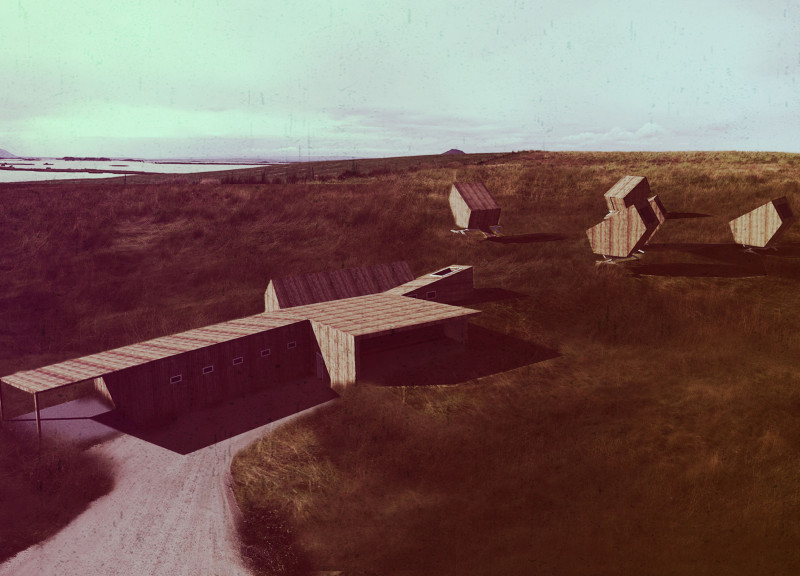5 key facts about this project
The design in Reykjahlid, Iceland, explores the relationship between construction and the natural world. Set in a remote, geothermal region, the project aims to connect with its surroundings. It serves multiple functions, including stables, a refreshment area, a sauna, and housing for staff. The design emphasizes ecological considerations, user experience, and the local landscape.
Design Concept
This project focuses on blending the structure with the Icelandic environment. Green roofing is used to help the building merge with the landscape, reducing its visual impact. The north-facing terrace is an important feature, designed to provide excellent views of the northern lights during summer and winter. This thoughtful positioning encourages visitors to enjoy the beauty of nature, fostering interaction between people and their environment.
Functional Layout
The internal arrangement includes multifunctional spaces that meet various needs. There are stables for horses and a refreshment area overlooking the terrace. These spaces work together to create a comfortable atmosphere for both visitors and staff. The layout incorporates areas for social interaction as well as private retreats, enhancing the overall experience for users.
Sustainability Features
Sustainability is a key aspect of the design. The project utilizes geothermal energy from the local area for heating purposes, reflecting an approach focused on environmental responsibility. Additionally, the building is designed to collect rainwater, which will be reused for sanitation and irrigation. These features support the goal of minimizing the ecological footprint and respecting the surrounding ecosystem.
Spatial Experience
A unique element of the design is the telescopic feature that allows clear views of the night sky. Living units are arranged over two levels and designed with flexible furniture that accommodates different numbers of guests. This adaptability maximizes space while enhancing users' connection to their surroundings. A skylight lets in natural light and creates an opportunity for guests to gaze at the stars, deepening their relationship with the cosmos.


























